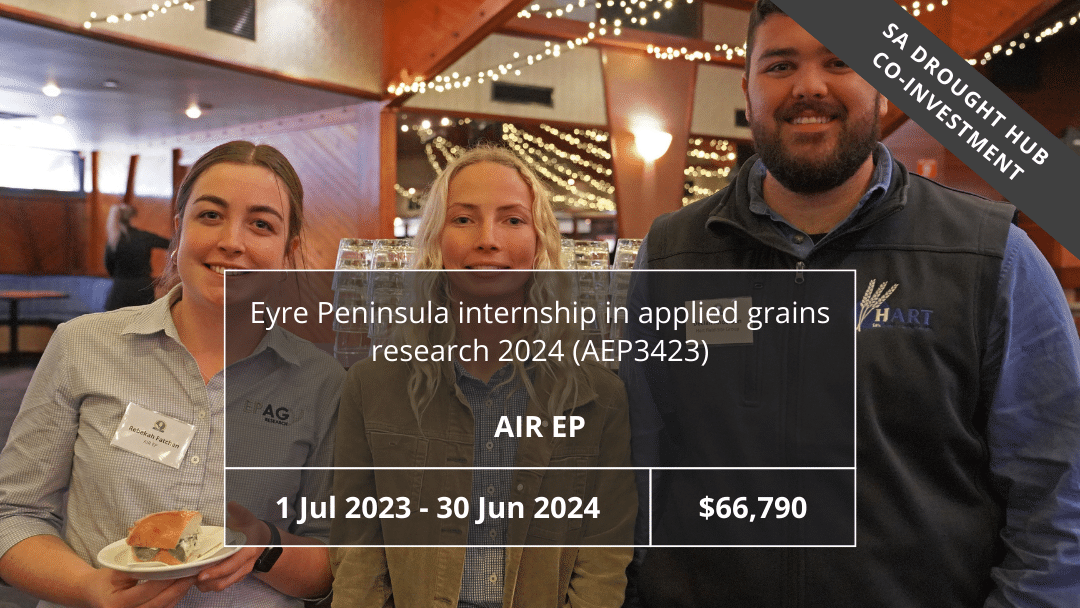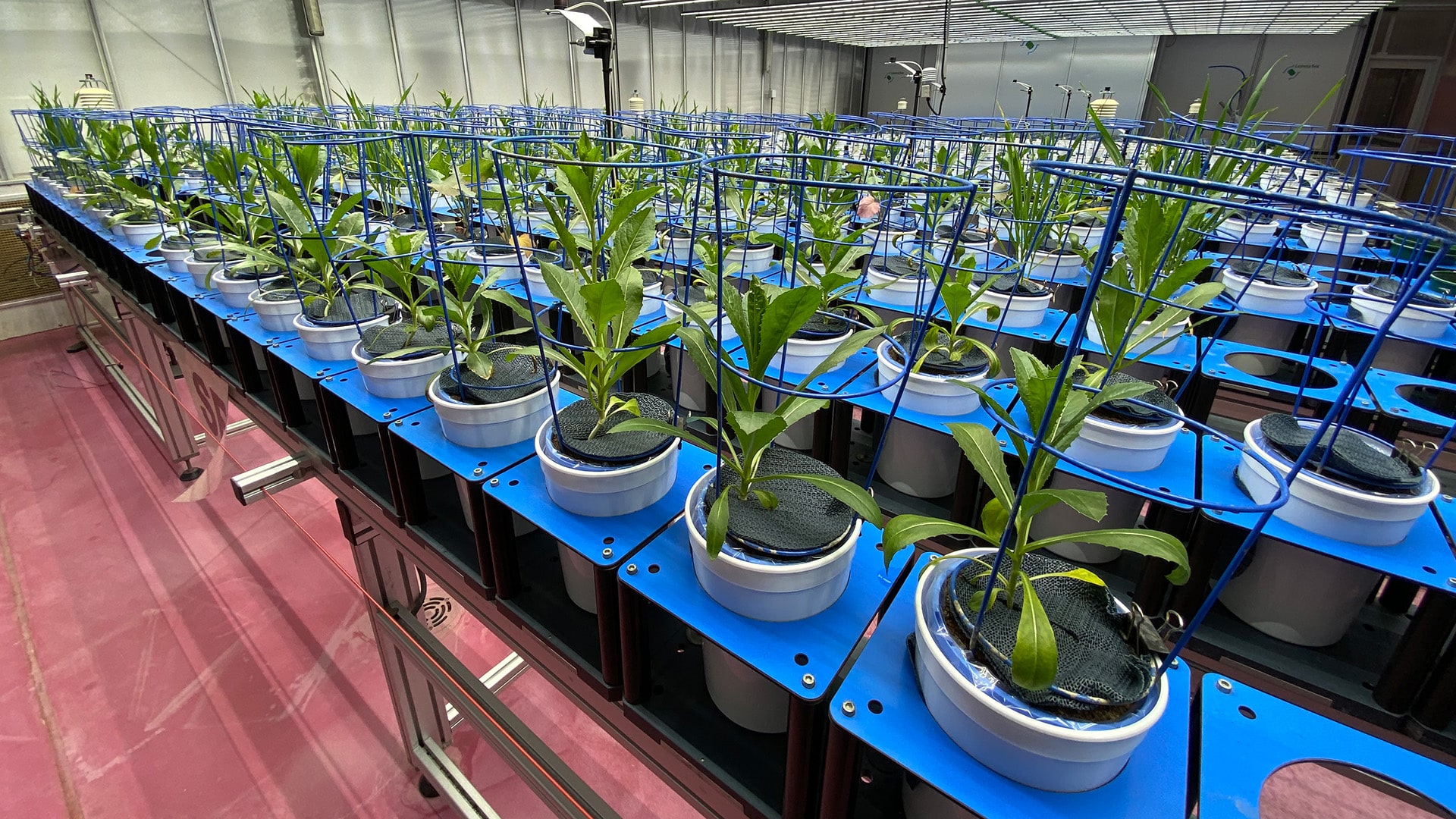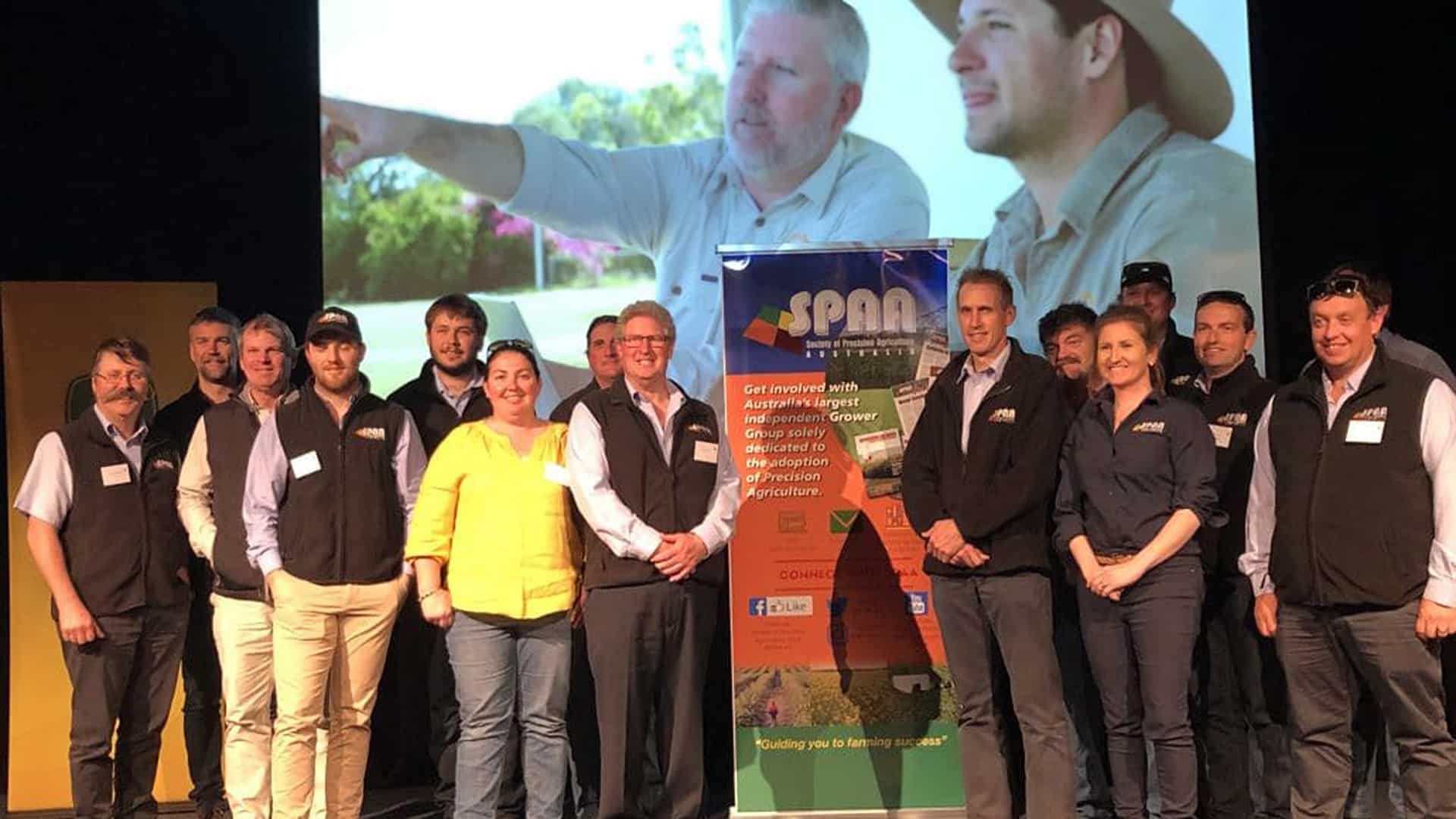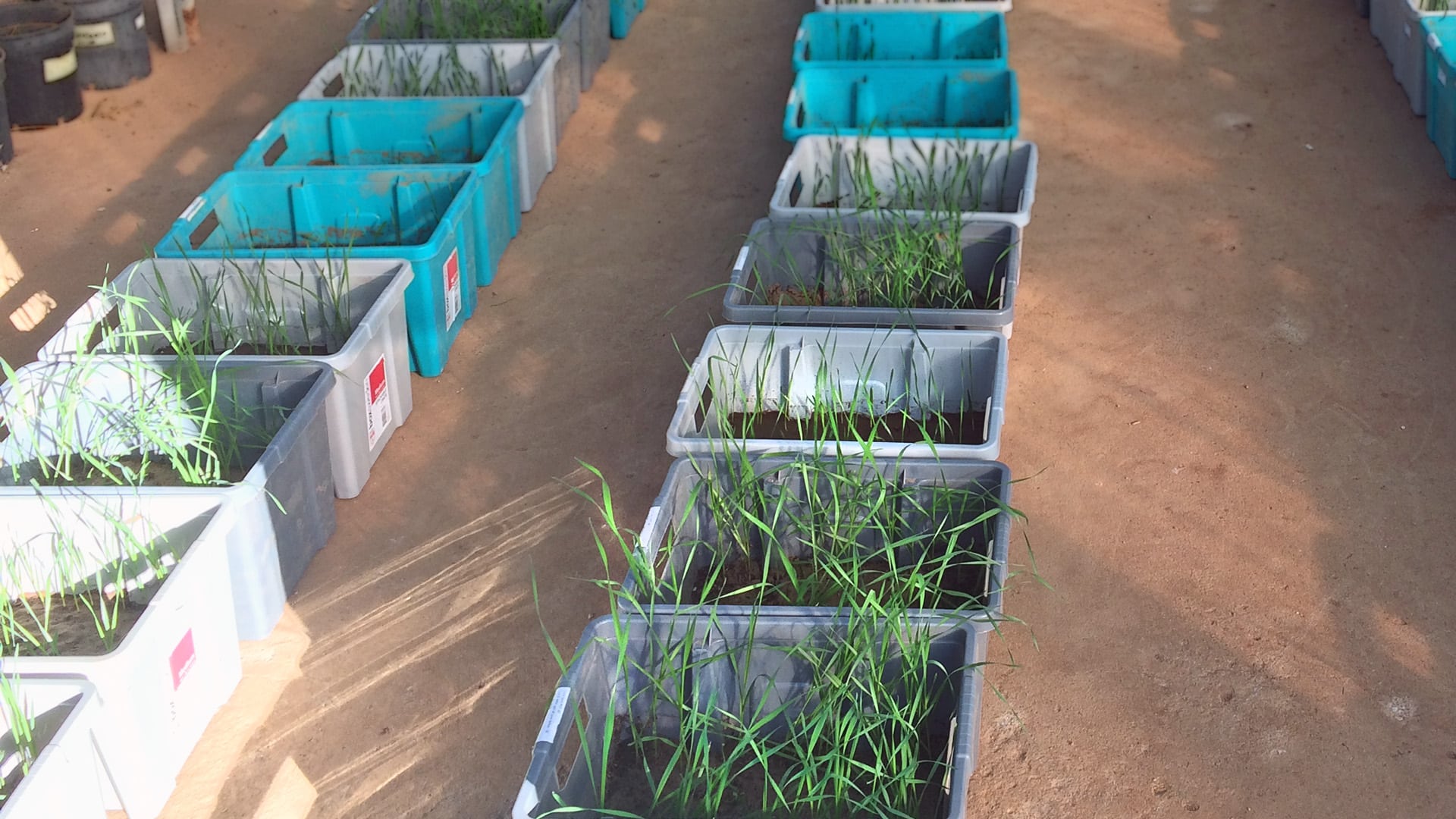START
FINISH

Summary
This project aims to improve the capacity of grains research, development and extension on the Eyre Peninsula and to further develop applied research skills of recent graduates so they will make an improved contribution to the grains RD&E industry in SA, through the appointment of interns within local research organisations.
Project Participants
Naomi Scholz, AIR EP
The research
This project aims to improve the capacity of grains research, development and extension on the Eyre Peninsula and to further develop applied research skills of recent graduates so they will make an improved contribution to the grains RD&E industry in SA, through the appointment of interns within local research organisations.
Funding
$66,790
This project is a co-investment, with the SA Drought Hub providing an additional $66,790 funding.
More information
Naomi Scholz
T: 0428 540 670
E: [email protected]



